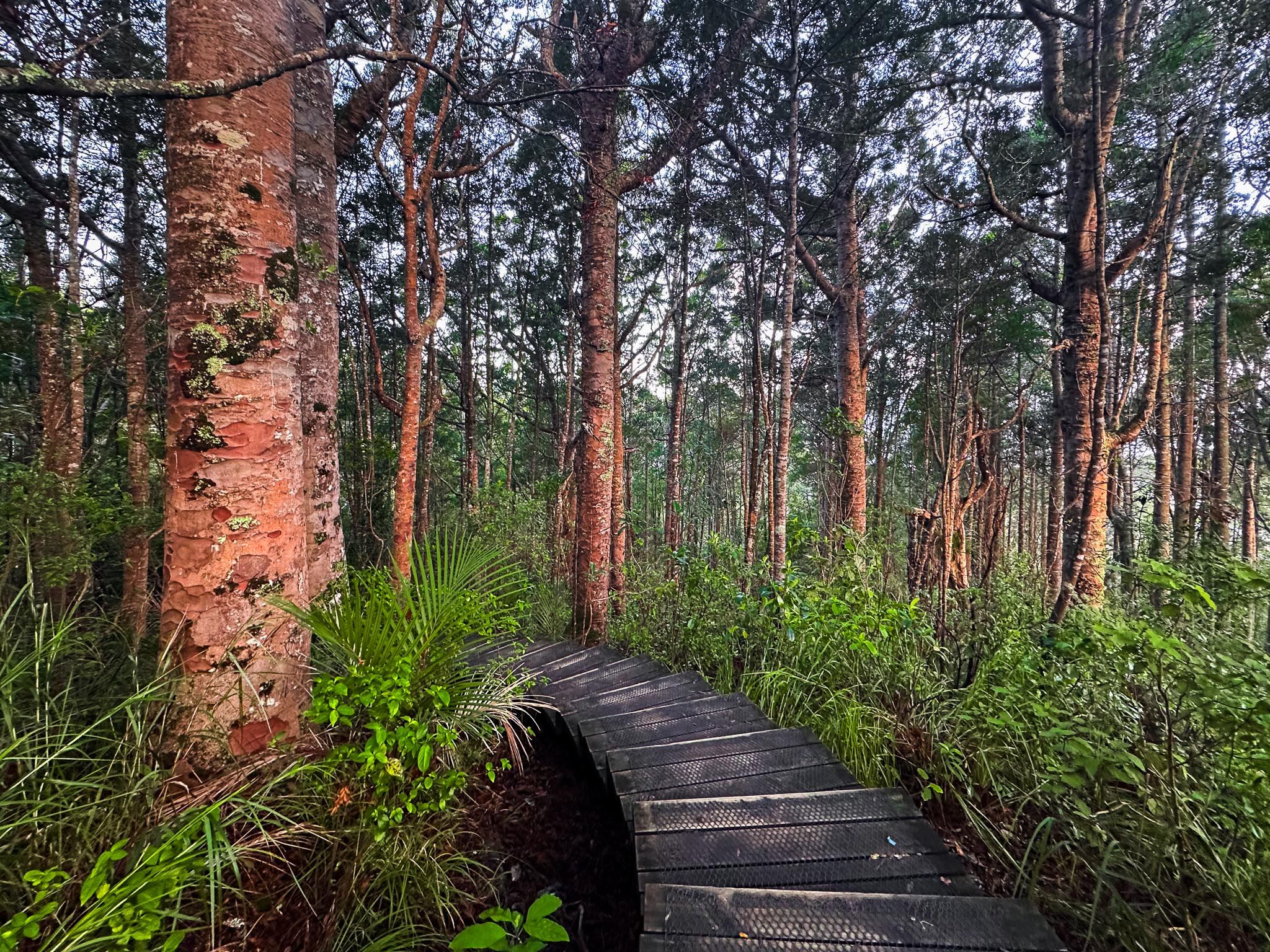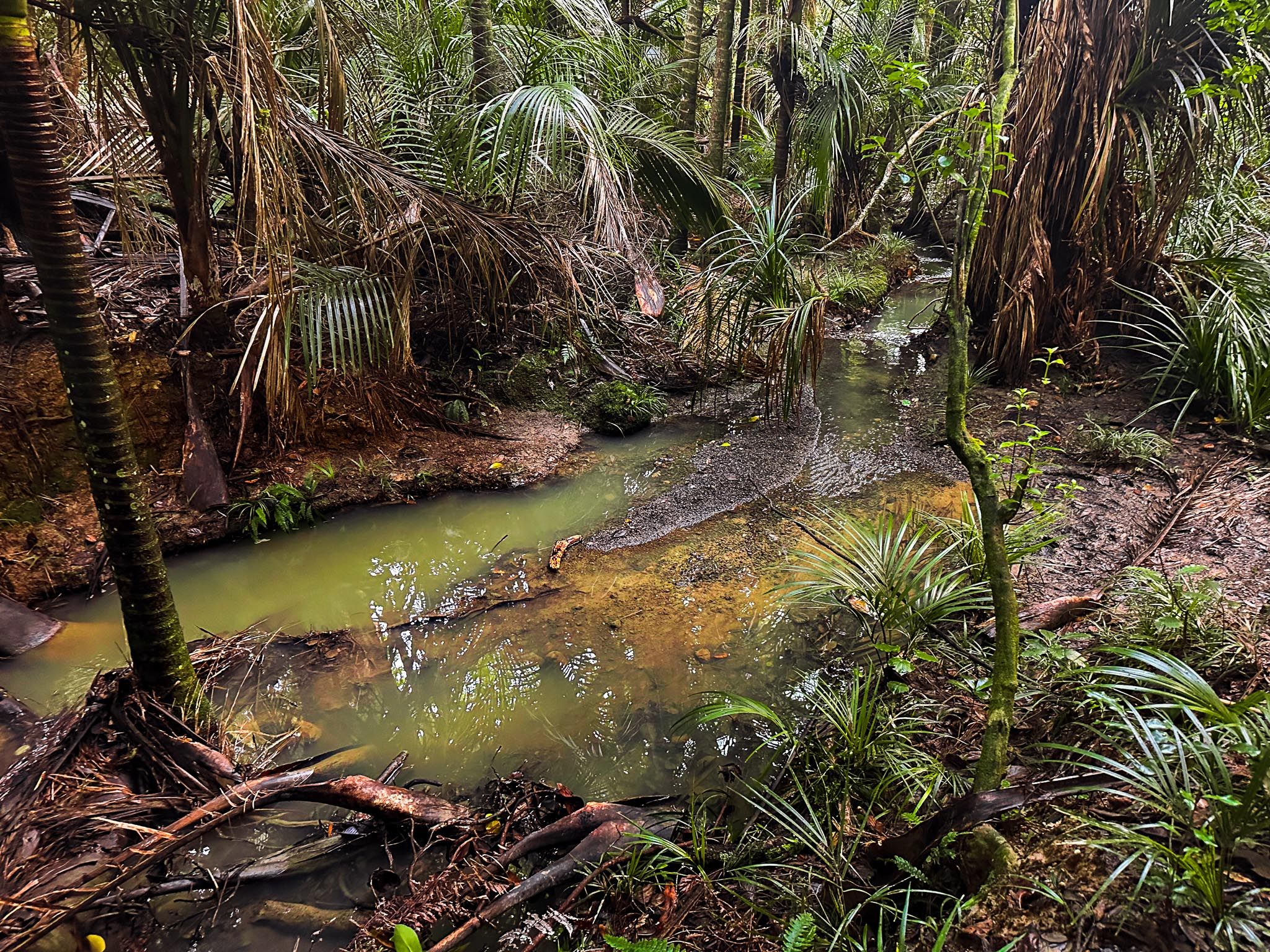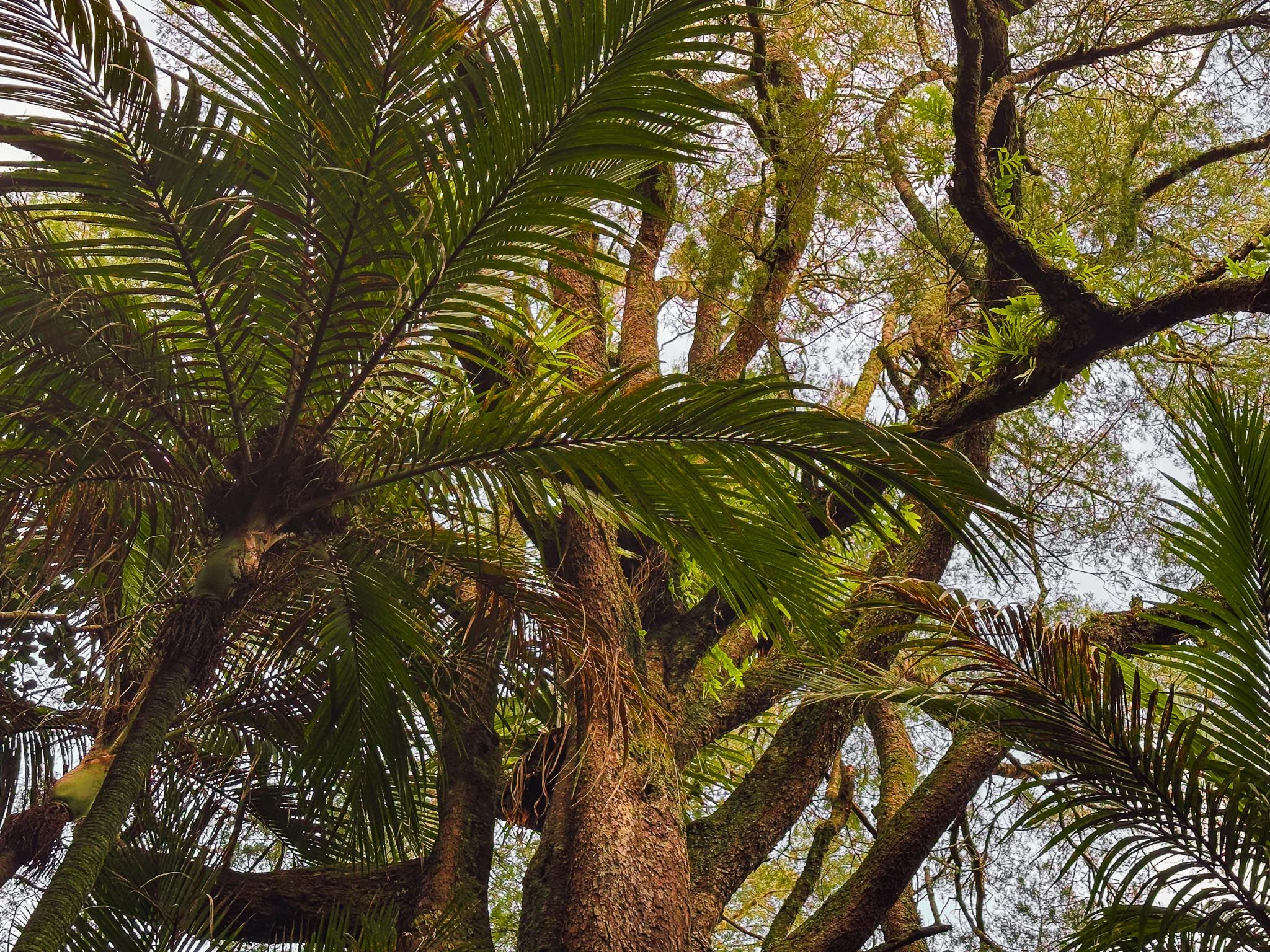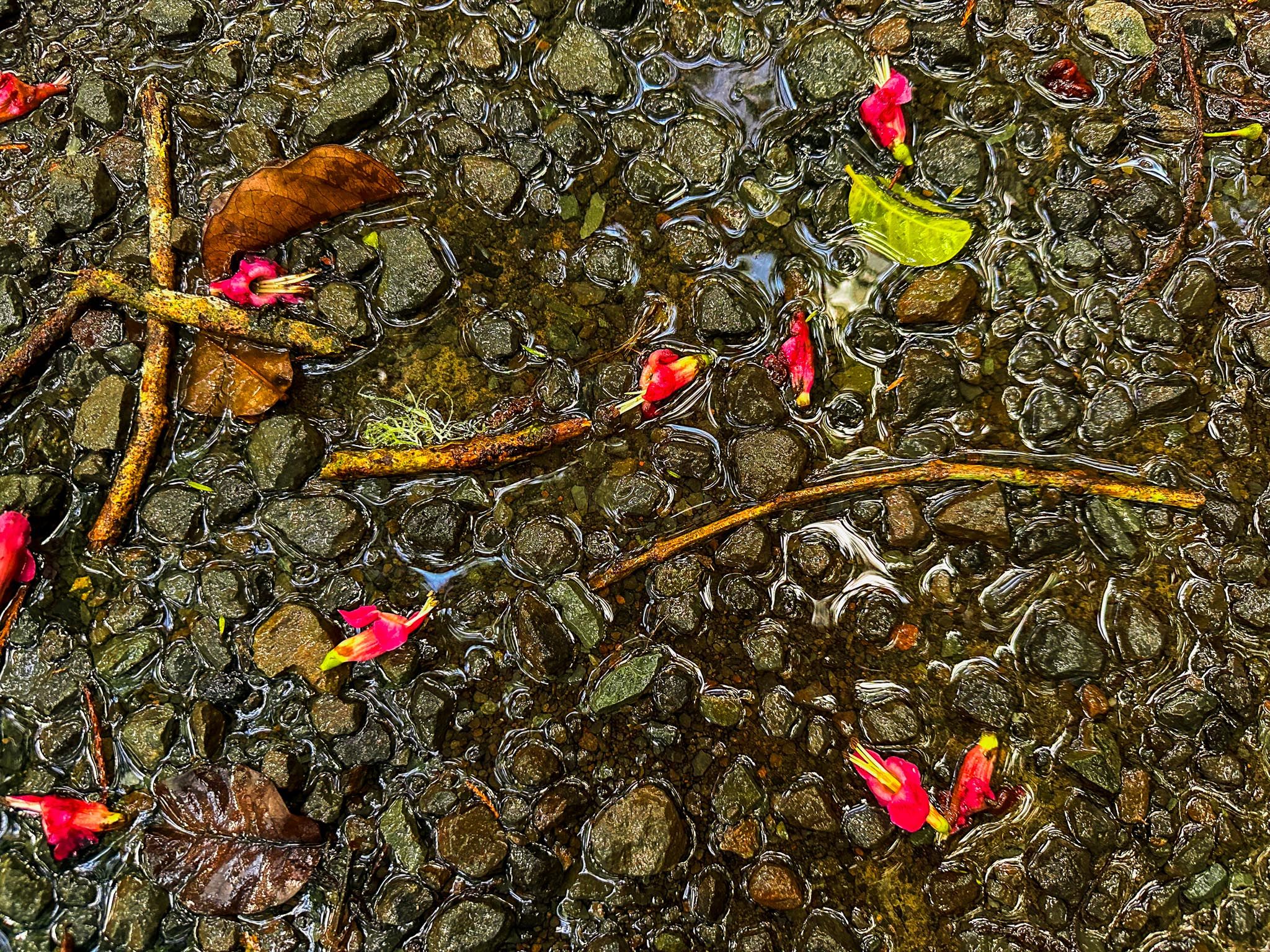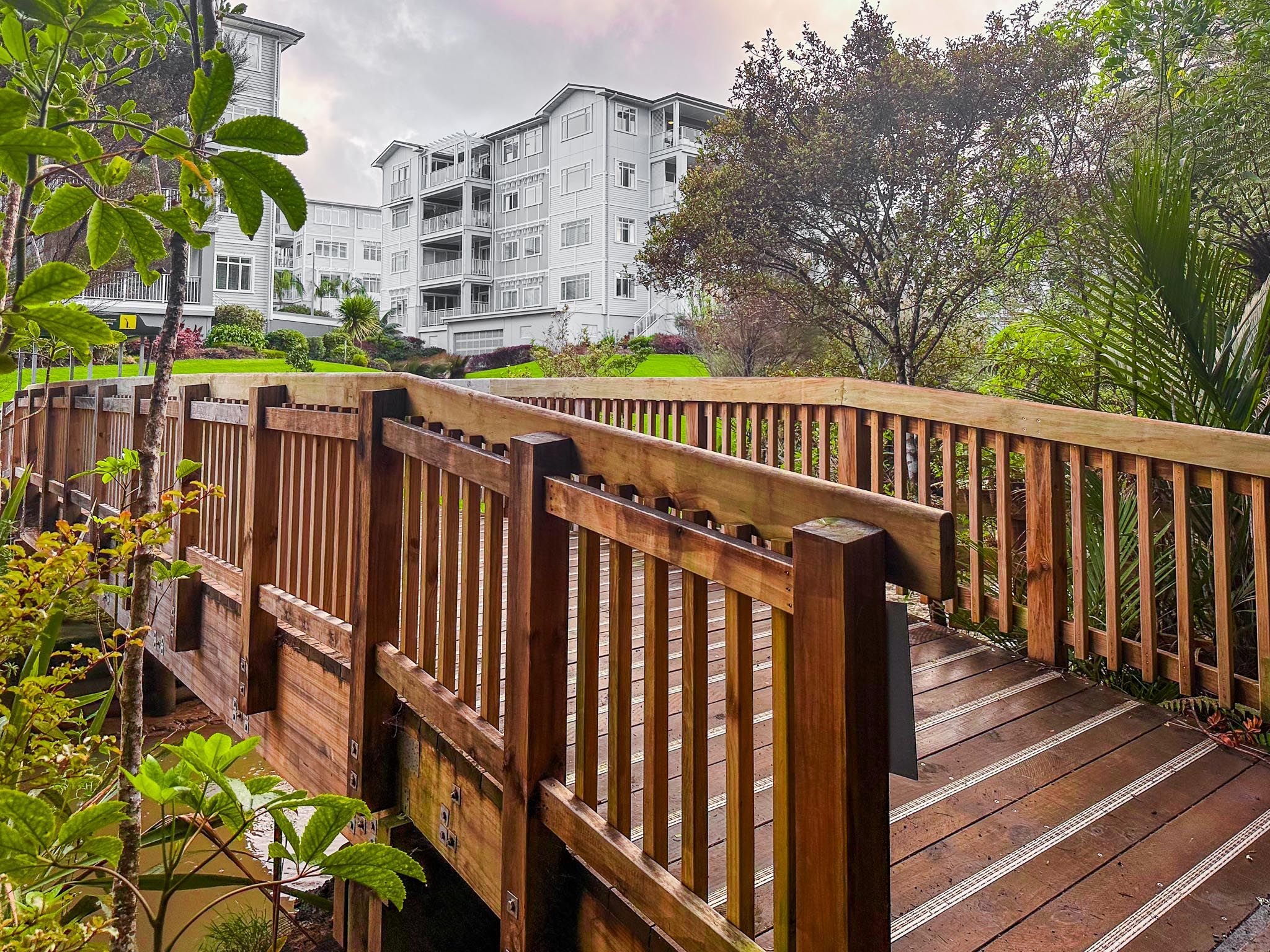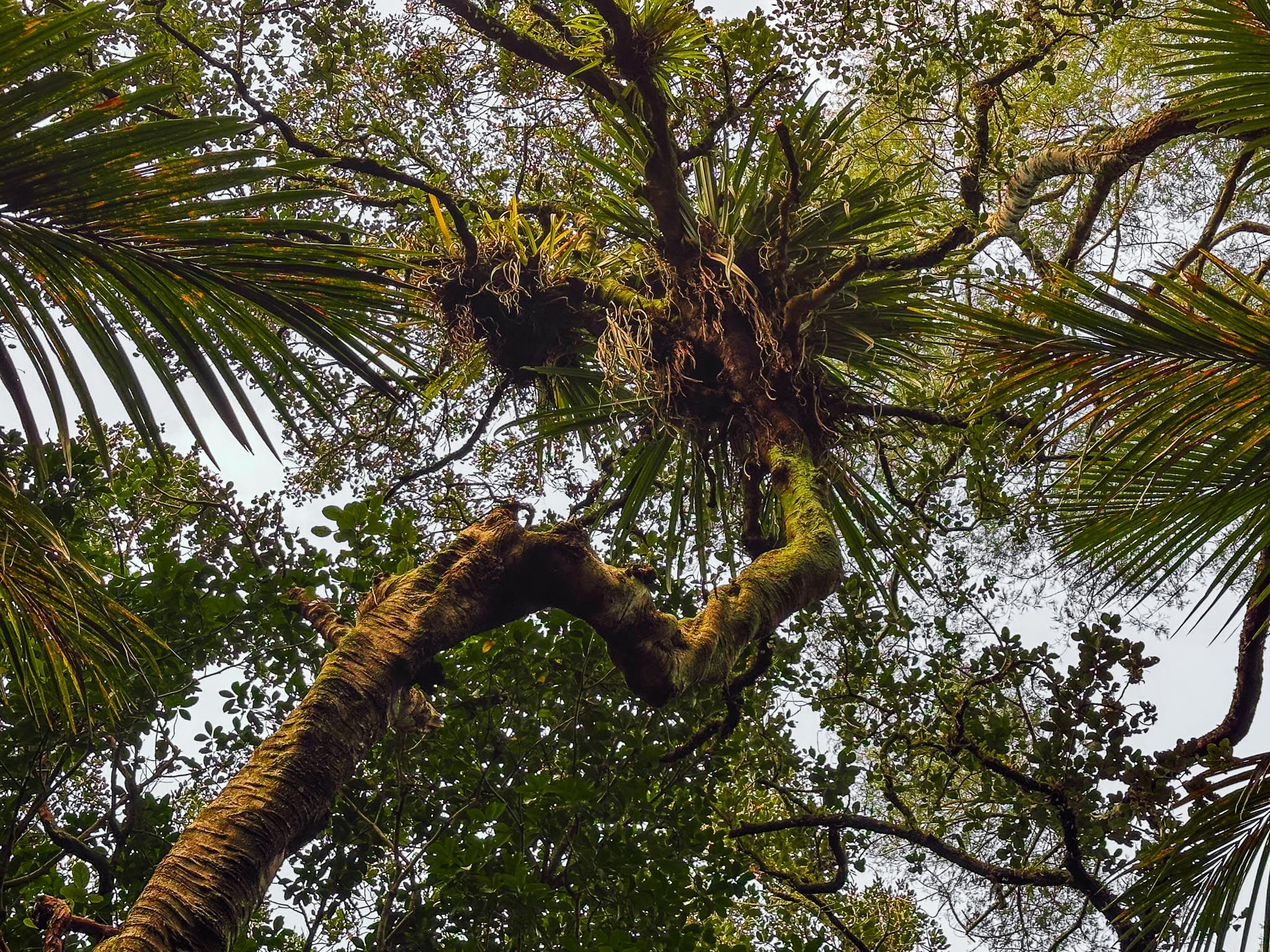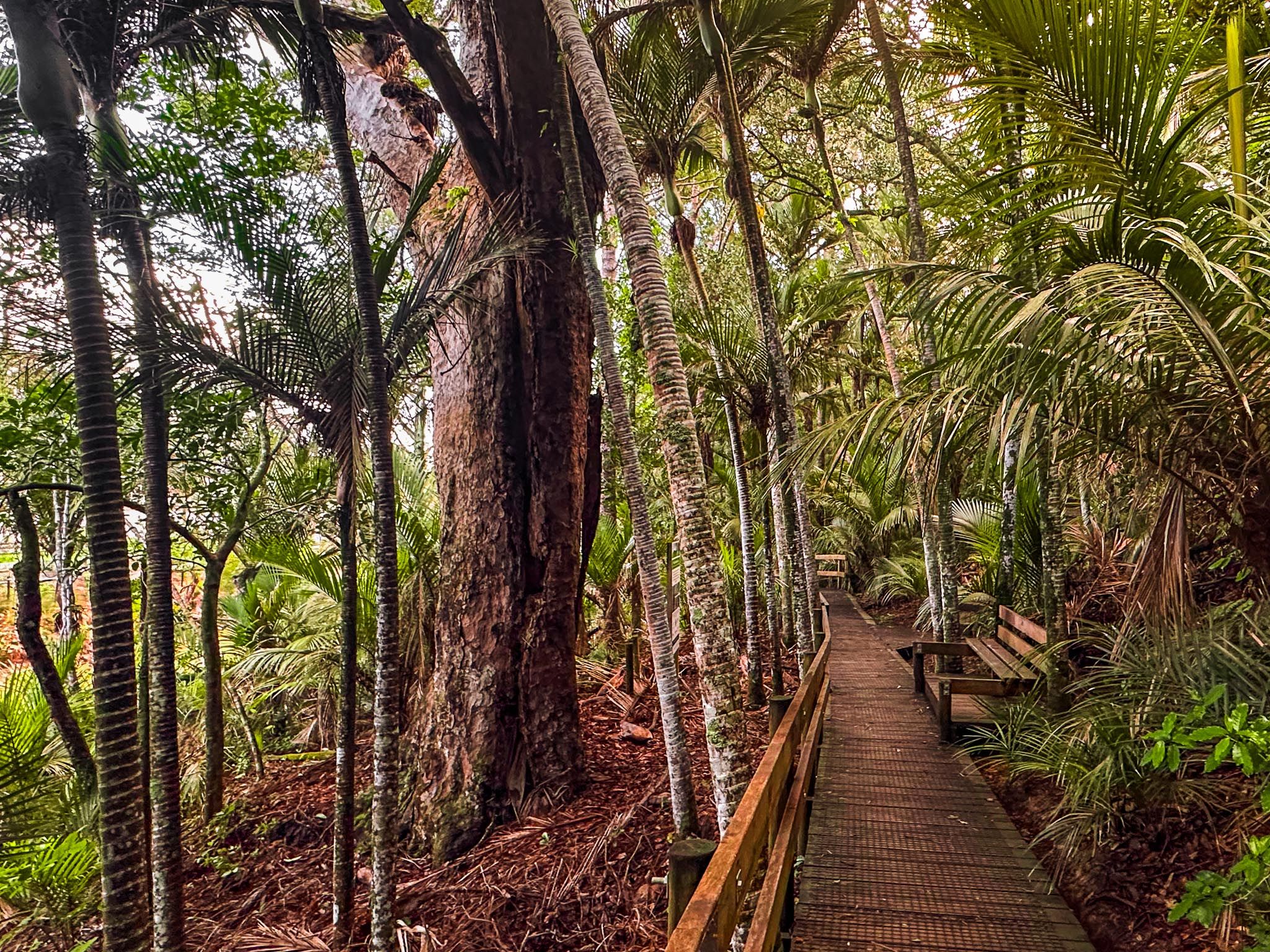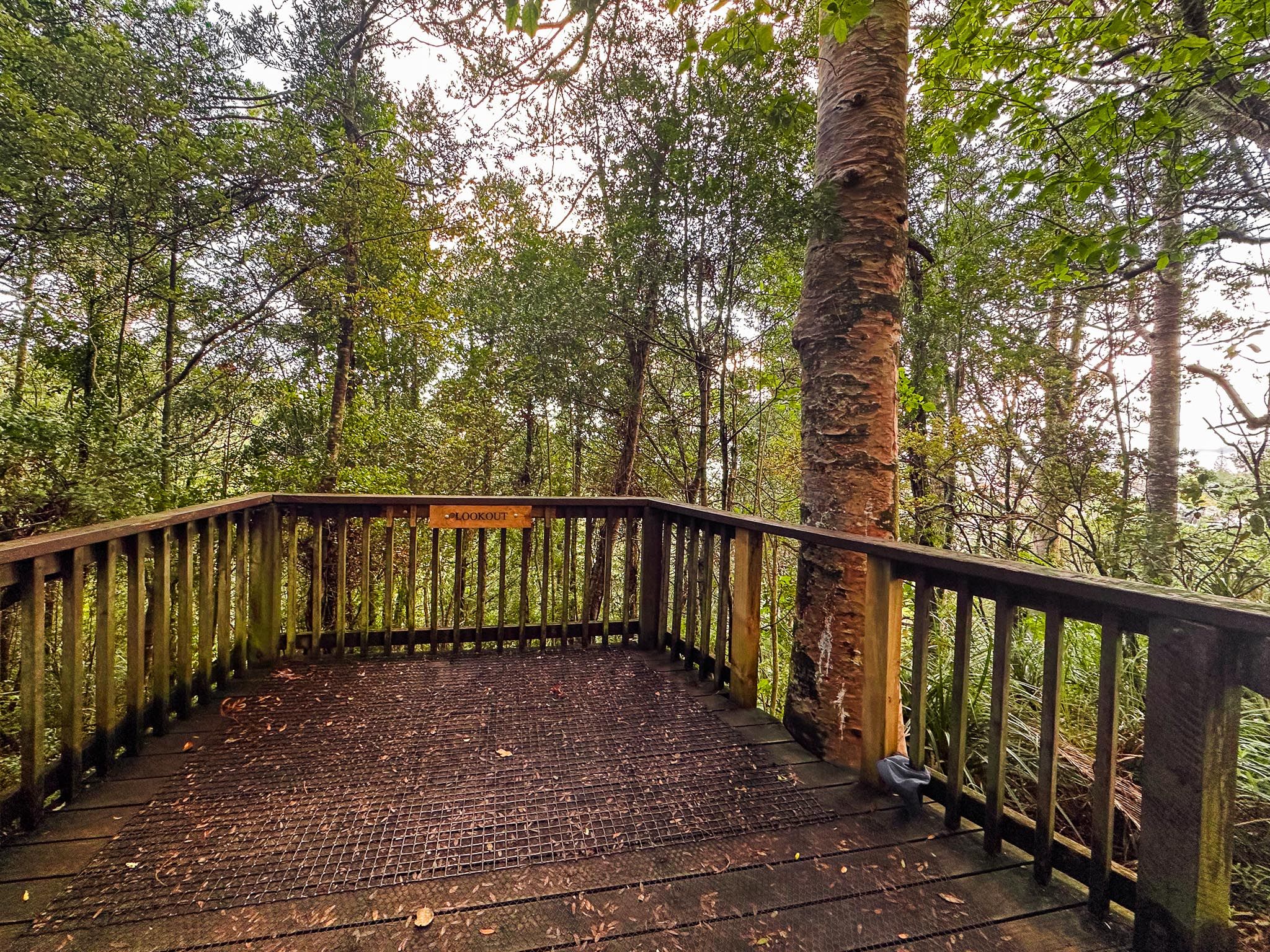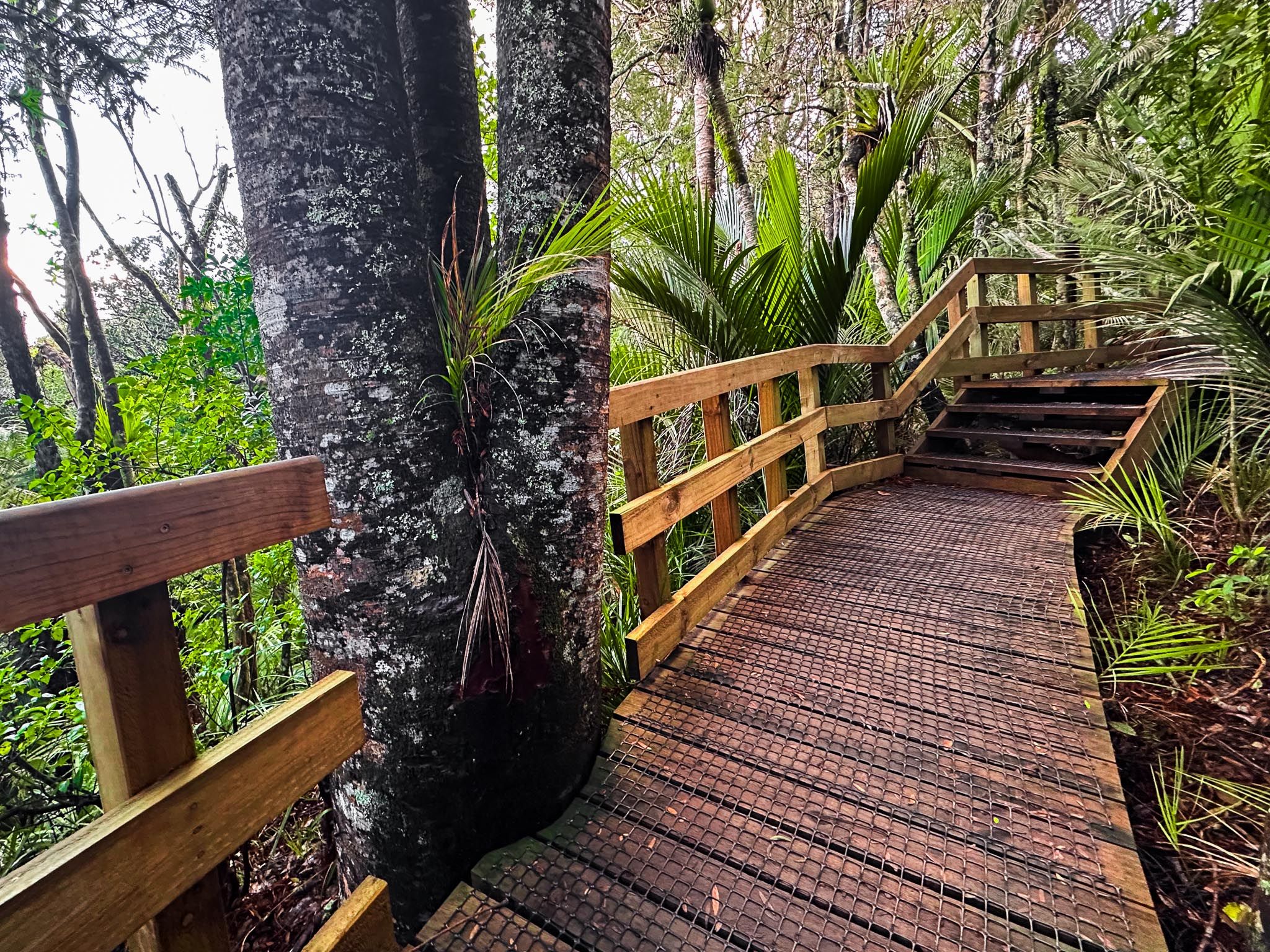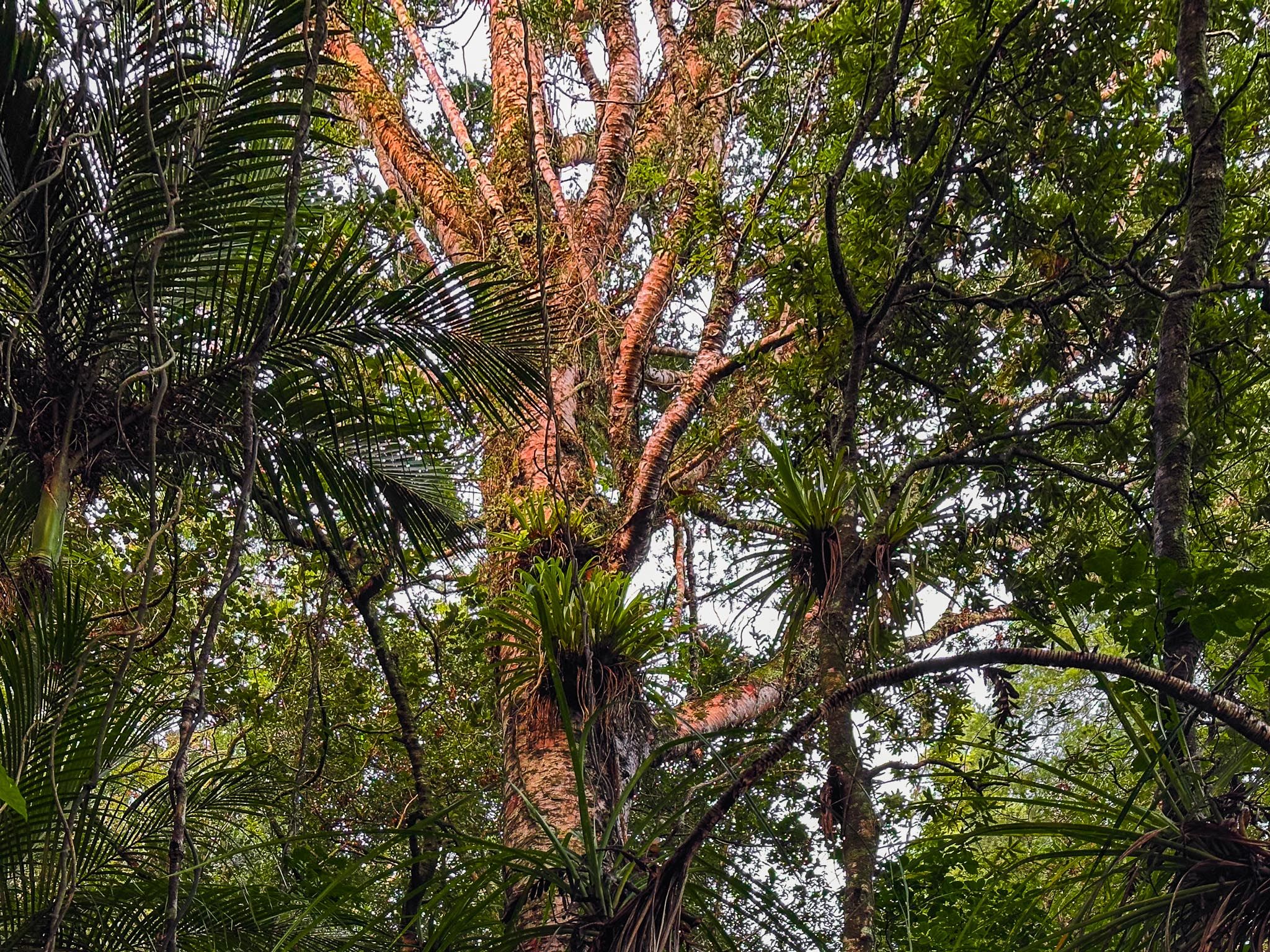Tucked away on the northern side of Ōrewa, the Alice Eaves Scenic Reserve is a 16-hectare pocket of coastal kauri, podocarp and broadleaf forest that is a world away from the bustle of Auckland. This remnant forest is one of the few examples of an Auckland native forest with big mature trees, with impressive kauri and kahikatea at 300-plus years. There are also extensive numbers of nīkau palms, with an understorey alive with birdsong. While Ōrewa’s sweeping beach might be the town’s star attraction, the reserve offers a wonderful, quiet counterpoint with several connected trails that take only 10 to 20 minutes each.
The main entrance on Old North Road accesses a short network of gravel and boardwalk paths, looping through groves of kauri, kahikatea, karaka, kōwhai, mataī, pūriri, rewarewa, supplejack, taraire, and large numbers of nīkau. The track to the kauri lookout, with a reasonable number of steps, climbs to a close-up view of big trees, some up to 50 metres high. Watch out especially for kererū and tūī through the canopy.
Continuing beyond the lookout is a higher track to the Hillcrest Road entrance and the site of a former pā, once occupied by Te Kawerau hapu up until 1827. An easier option is the Nukumea Stream Track, following the stream towards Kensington Park. Along the way, you will see the forest’s most famous tree – an 800-year-old hollow kauri that has endured storms, lightning, hacking by people and fire. It is an extraordinary site; still alive despite natural and man-made disasters! Also note the spectacular kahikatea and pūriri trees on this track.
The reserve has an interesting history. It was part of the enormous Mahurangi Purchase in the early 1840s. In the late 1850s, it was owned for a while by Captain Martin Krippner, who went on to found the Bohemian settlement of Puhoi. It was then acquired by Captain Issac Cooper, who built the first version of Ōrewa House. He sold the land and house to the De Grut family around 1868, who eventually sold it to Alice and Edward Eaves in 1919.
By then, the forest was a small, damaged remnant of the forests that had dominated the region in the 1830s, when the first European foresters arrived. When the Eaves acquired the land, Alice, a keen gardener, was determined to protect and foster the forest. The remnant had some larger trees to facilitate reseeding, and a mass of young kauri amongst the big trees is a feature of the higher part of the reserve. Following the death of Alice Eaves in 1955, the land was gifted to the community. The local Lions Club built tracks and bridges, cleared invasive weeds, and officially opened the reserve in 1960, along with the daughters of Alice and Edward Eaves.
From Downtown Auckland, it’s around a 35-minute drive on the Northern Motorway to the Ōrewa / Grand Road exit, then a few minutes through the township to Old North Road or Hillcrest Road. However, parking near the entrances is very limited, and you may be better off walking from Arundel Reserve at the north end of the beach to Old North Road, which only takes a few minutes. For walkers on Te Araroa, it is a short deviation up Old North Road.
